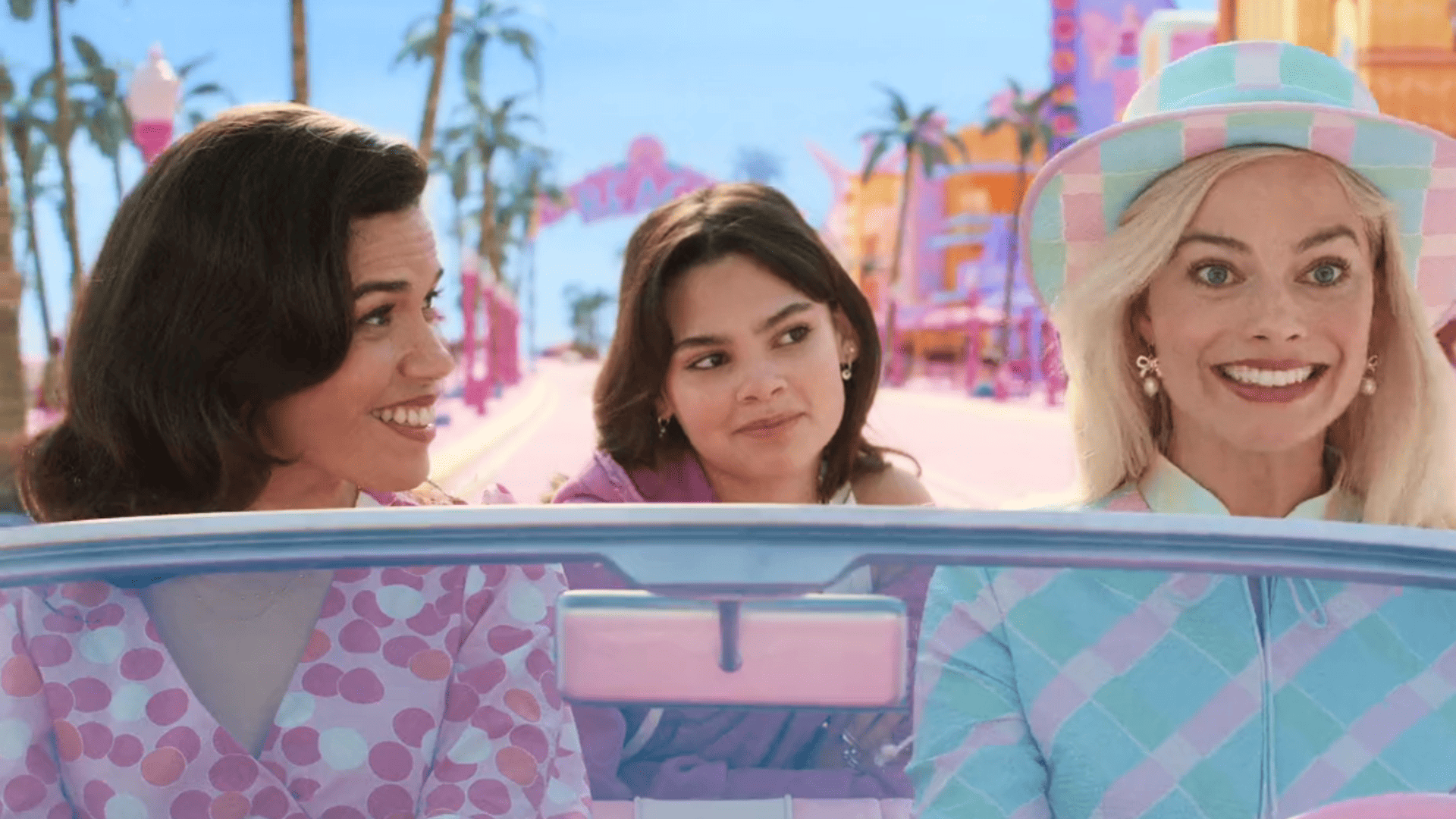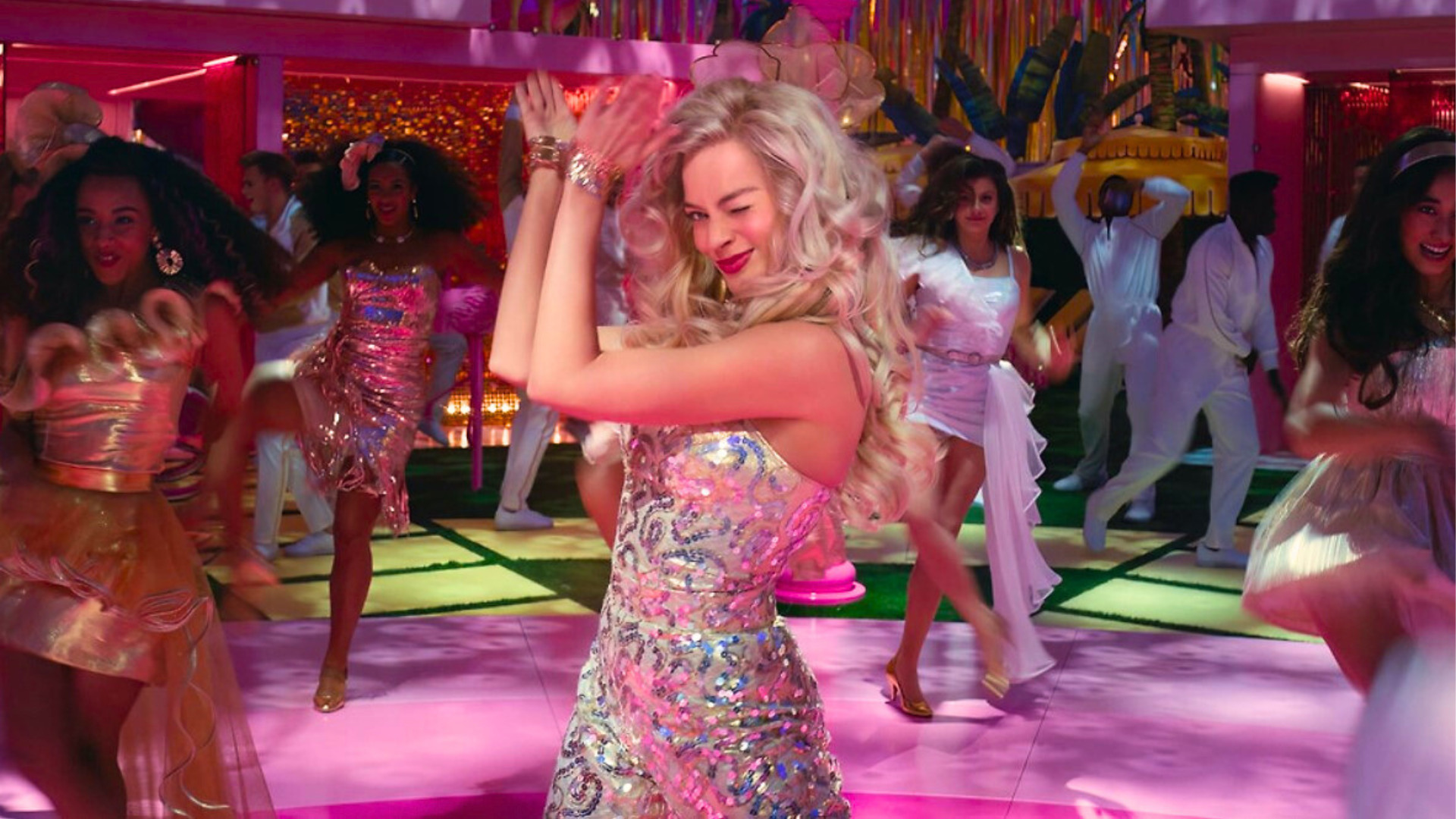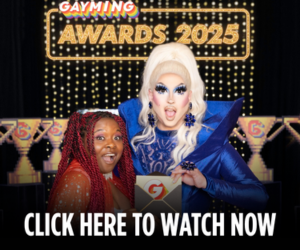Unpacking Barbie: Why the Barbie movie is undeniably queer
When speaking about Greta Gerwig’s Barbie through a queer perspective, a lot of the argument has been boiled down to the very rudimentary question of: is this film explicitly queer?
For some viewers, the answer will always be no. There is no romantic love story between America Ferrera’s Gloria and Margot Robbie’s Barbie (Stereotypical Barbie), the former has a husband (who we barely see), and the latter has Ryan Gosling’s Ken, who certainly acts like her boyfriend, regardless of how disinterested she is. There’s also the fact Barbieland is completely heteronormative. There is no Barbie without a Ken and no Ken without a Barbie.
Yet in my heart of hearts, I know that not only is the Barbie movie queer, but its queerness is undeniable. Much like a siren song, I watched this fun romp of a pretty pink world, full of music and dance numbers, and felt it call out to me. From Michael Cera’s Allan to Stereotypical Barbie herself, there is plenty, and I do mean plenty, for a queer watcher to get stuck in.

Let’s cut right to it. The aforementioned Allan and Kate McKinnon’s Weird Barbie. Both are considered outsiders in this matriarchal world of Barbieland, and though Allan is much more quietly tolerated than Weird Barbie, it’s only because people see him as Ken’s buddy, rather than himself. His inclusion is, without a doubt, a nod toward gay men. When Barbieland gets turned into a patriarchal nightmare full of horses, ragers, gym-bros and the Barbies being reduced to nothing but sex on legs, Allan decides to get the hell out of dodge. As Michael Cuby from Them explains, Allan’s departure is a perfect, relatable example of “any small-town gay leaving the homophobic halls of Bumfuck, Nowhere for the sparkling liberation of New York or L.A.” His subsequent return has him as a comrade to the Barbies, whose mission to return Barbieland to normal meets Allan’s exact goals where he is allowed to be himself and not have to treat women as an extension of himself, rather than as companions.
Yet, for as out of place Allan is in Barbie, Weird Barbie is treated with outright contempt. Not only is she called Weird Barbie to her face (and behind her back), but her house is secluded away behind a huge wall and gates. Nobody seems to visit her outside of the discontinued Barbies, and she is considered someone so freaky that Stereotypical Barbie going to her for help is seen as a last resort option. It should also be noted that, unlike the other Barbies, Weird Barbie doesn’t have her own Ken either, though the reason for that is never really explored. But let’s be real, it’s because Weird Barbie is considered Gay Barbie in the same way Allan is. Neither of them fit in, and the other Barbies’ aversion to Weird Barbie in particular reminded me far too much of the way straight girls used to speak about lesbians in the girls’ changing room when I was growing up: ‘wouldn’t it be weird if anyone in here was a lesbian and could be busy — right now — staring at us all?’
The Barbie movie’s feminism isn’t life-changing and doesn’t truly say anything that hasn’t been said before back in 2015 on your favourite Tumblr blog, and yet, regardless of whether it was a deliberate choice or not, I found myself admiring how the film expertly conveys the all-too-prominent line between straight and queer women, and how that too relates to the patriarchy and heteronormativity that runs so rampant throughout both the film’s Real World and Barbieland. Eventually, the other Barbies come to realize their prejudice is not on and that differences between them should be celebrated and not ridiculed, an inclusive ending for both Weird Barbie and Allan, overall.

And yet, the most glorious example of queerness within the Barbie movie comes from Stereotypical Barbie herself. Stereotypical Barbie is perfect from head to toe; her body, her skin, her hair, and her fashion? Out of this world. She is the human personification of a 100/10 rating, and while her reputation has slowly changed over the years, it’s undeniable that Barbie has shaped many a young girl’s body image over time. She is the example that most are drawn to when speaking of the feminine form, despite how wildly unrealistic it is. Men want her, women want to be her. This is why when Barbie’s body begins to change (her feet go flat, she gets cellulite, etc) she freaks out. She does not want to go against the status quo of her very being.
Barbie’s body is the catalyst for a lot of the narrative beats throughout the film. A doll she may be, but Barbie’s body is warped from what she deems to be ‘perfection’ due to her creators’ anxieties. It is only later that she realizes that she is in charge of her body and her perception of it, not Gloria, not Mattel, not the misogynistic men that touch her or comment on it, that Barbie realizes she can be whoever she wants to be. Her body changing isn’t a force of evil, it’s human, and being human is beautiful. The final line of the film isn’t just a gag about a blissfully unaware Barbie and gynecologists — especially since Barbie herself confirms neither she nor Ken has genitals in the first place — it’s Barbie choosing to embrace her body with gender-affirming care. And oh, did I mention it’s Barbie who chooses her own, non-Barbie, name in the end? I’m not saying the Barbie movie is a trans allegory as well as being undeniably queer, but I’m also not saying it isn’t.
And then we, finally, come to Barbie’s relationship with Ken. Growing up, I’ve always been told that Barbie’s relationship with Ken is a simple one – he’s a perfect guy made for the perfect girl — the pinnacle of heterosexual greatness. Only, in this film, Barbie’s relationship with Ken is best described by Helen Mirren as the film’s Narrator; “Barbie has a great day every day, but Ken only has a great day if Barbie looks at him.” Their relationship is unequal and for her, is full of genuine disinterest in Ken as anything but a friend.

Barbie is far more interested in the female relationships she creates throughout the film, such as the one with Gloria, the woman who she belongs to and who later becomes her greatest ally against the speed-run patriarchy that Ken injects into Barbieland. It’s Gloria who, when Barbie sympathizes with Ken for her previous actions, reminds Barbie that she doesn’t need to forgive Ken if she doesn’t want to. And, ultimately, it’s Gloria who shows Barbie genuine affection with no expectation of anything back. The bare minimum maybe, but a complete contrast to the ugly possessiveness of Ken.
Then there’s Gloria’s daughter, Sasha, who at first sees Barbie as the root of all evil (even going as far as to call her a fascist in one of the movie’s many funny scenes), but later becomes the force to metaphorically slap sense into Barbie during her crisis of faith. Both of these two women are poignant reminders to Barbie that, as ugly and powerless as she may feel against the patriarchy, it isn’t just about her, but the danger it presents to everyone who dares threaten its existence.
But what further makes me feel as though Barbie is a wild and wonderful tale of a trans lesbian finding her humanity is, strangely enough, Weird Barbie’s clubhouse becoming a safe haven for each and every character that doesn’t quite fit into this patriarchal and heteronormative world established by Ken. In today’s world, where laws can and will punish you for merely existing as a trans person, or daring to be queer in a public place where children could see, spaces where the LGBTQ+ community feels safe are dwindling by the day. In this clubhouse all of the discontinued Barbie’s, Gloria, Sasha, Weird Barbie herself, ‘Magic’ Ken, and Allan come together to plan to take Barbieland back from the heteronormative hellhole it’s become. Yet even when they do, Barbie isn’t content in being stuck in a place that doesn’t ever change, but dreams of going to a place where she can express herself and experience life. At that moment, Barbie seizes the chance to do what Allan tried to do earlier in the movie — escape and finally be true to who she is.
The Barbie movie is an incredible journey from start to finish and while it doesn’t say anything that may feel revolutionary in the year 2023, the way it’s packaged — the glitz, the glamour, — will stick in your mind all the same. If you’re after a fantastic romp, look no further than here.








